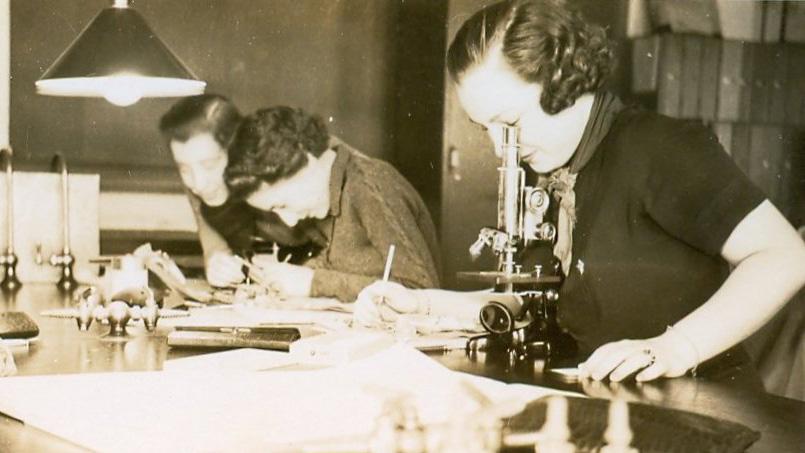In an archive photo, student Mary Duke Webber uses a microscope at Duke University at some time in the late 1930s.
Back in the 16th century, when Dutch lens-maker Zacharias Jansen and his father began experimenting with magnifying glasses, they had no idea that we might be able to see the world at a molecular level some day.
Yet this year's Nobel Prize in Chemistry was awarded today for developing a way to take an even closer look at that tiny world. Scientists Eric Betzig, Stefan Hell and William Moerner figured out a way to enable to the optical microscope — the kind the uses light, just like the ones you remember from high school — to see further into the cell than ever before, ostensibly getting man deeper into the nano-dimension.
The what?
Think of the nano-dimension as its own kind of tiny universe, says Ortwin Hess, a nano-physicist at Imperial College London: “Certainly, looking up at the sky has all of the fascination that people have been dreaming about," he says. "But staying here on Earth, we have an intermediate cosmos, an intermediate galaxy to discover by seeing the way molecules are arranged.”
Even though the scale is tiny, the nano world is vast. “It's about the same order of magnitude going down to the nano world as going from the Earth to the Sun,” Hess says.
And while nanotechology has only recently come into its own, Hess says it has been around for a long time. “The Romans — unknowingly, probably — they used little bits of nano metals to embed in glass to change the color and that made its way to church glass windows in the Middle Ages as well,” he explains.
The famous Damascus steel was also enhanced with nano bits of carbon to make it especially strong. But it's only today that we understand the reasons behind the colored glass and the strong steel.
In the 1950s, physicist Richard Feynman famously gave a lecture entitled, “There’s Plenty of Room at the Bottom," marveling at how little progress had been made in miniaturization. “With everyone else looking up at the stars, [Feynman] said it’s also very interesting to look down to small structures,” Hess says.
"There is a device on the market, they tell me, by which you can write the Lord's Prayer on the head of a pin. But that's nothing; that's the most primitive, halting step in the direction I intend to discuss," Feyman said in his lecture. "It is a staggeringly small world that is below."
